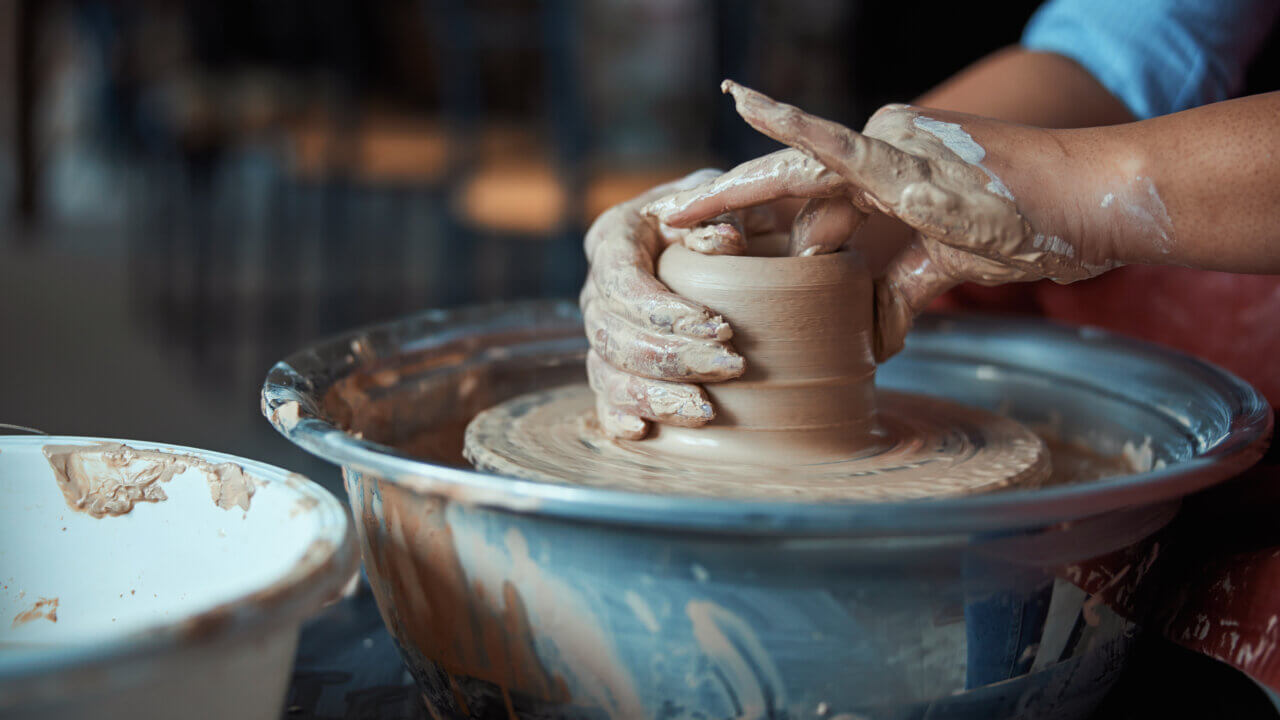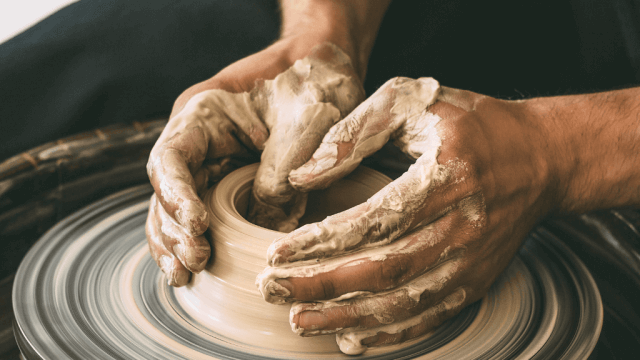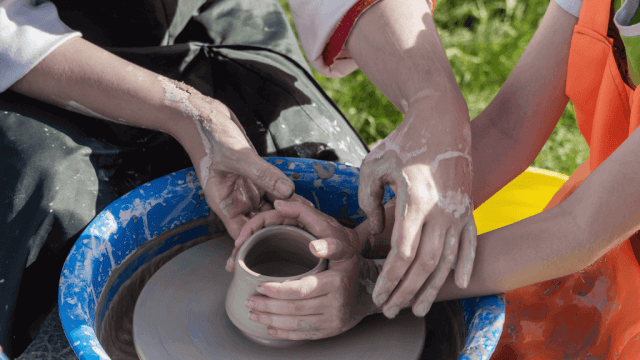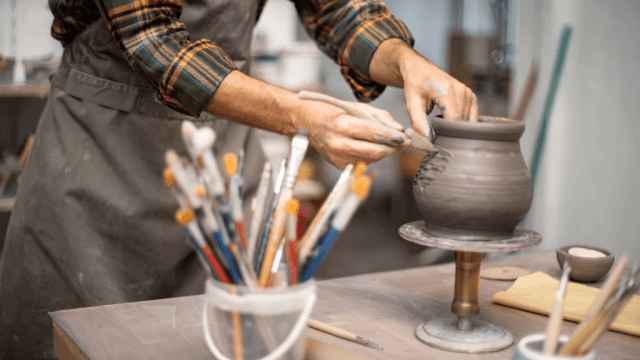The pottery wheel was invented around 3500 BCE during the early Bronze Age in Mesopotamia.
Origins of the Pottery Wheel
The pottery wheel, a significant invention in the field of ceramics, emerged around 3500 BCE during the early Bronze Age in the region of Mesopotamia. This innovative tool paved the way for advancements in pottery production, enabling potters to create more intricate and refined pieces.
Evolution of the Pottery Wheel
Slow Wheel
The initial pottery wheels, known as slow wheels, were made of wood or stone, with leather or cloth acting as a bearing at the pivot. They were operated by hand or by turning a stick through a wooden or stone slab hole.
Fast Wheel
By the Iron Age, around 1000 BCE, potters began to use the fast wheel, a more developed version of the pottery wheel. The fast wheel enabled greater control and precision, as it ensured consistent centrifugal force through foot operation, thus allowing potters to focus on shaping the clay.
Global Spread of the Pottery Wheel
The usage of the pottery wheel spread to neighboring regions such as Egypt, India, the Levant, and China. By 2500 BCE, it was prevalent in the Harappan civilization in the Indus Valley; by 2000 BCE, it was adopted by the ancient Egyptians; and by 100 BCE, the Han dynasty utilized the pottery wheel in China.
Impact of the Pottery Wheel
The invention of the pottery wheel revolutionized the pottery industry, enabling potters to produce more uniform and intricate pieces, enhance the quality of their work, and increase their output. As a result, trade in pottery crafts expanded, and innovative pottery techniques emerged, becoming an essential aspect of many civilizations worldwide.
Materials and Techniques with Pottery Wheel
With the introduction of the pottery wheel, a diverse array of clay materials became accessible to potters. Common materials include earthenware, stoneware, and porcelain clay. Over time, artists experimented with these materials to produce unique pottery styles and forms, using techniques such as coiling, molding, and carving. These developments significantly contributed to the advancement of pottery as an art form.
Glazing and Firing
The pottery wheel also encouraged the exploration of various glazing and firing techniques. Potters discovered that by applying glazes, they could create stunning finishes and color variations on their pieces. Firing techniques, like high or low-temperature kilns, Raku, and wood firing, further allowed artists to achieve distinct visual effects in their work.
Modern Pottery Wheels
Contemporary pottery wheels boast improvements in both design and materials. Today’s electric pottery wheels typically offer more precise speed control and consistent rotation, allowing potters to hone their skills. Meanwhile, traditional wheels, such as the Japanese kickwheel or the Indian potter’s wheel, continue to be utilized – preserving long-established pottery techniques and traditions.
Importance of Pottery Wheel for Contemporary Potters
In addition to increasing efficiency and precision, the pottery wheel has also facilitated the expansion of creative expression. Contemporary potters have capitalized on the wheel’s capabilities by creating a wide range of functional and decorative pieces. Collaborations between potters, artists, and designers have emerged, resulting in unique art installations and limited-edition pottery pieces. Ultimately, the pottery wheel’s enduring influence on the pottery world is a testament to its incredible versatility and utility.
FAQ Section: The Pottery Wheel
Find below some of the most frequently asked questions addressing the pottery wheel and its history. Explore these common queries to enhance your understanding of this crucial tool in the pottery-making process.
What is the purpose of the pottery wheel?
The pottery wheel is a tool used to shape pieces of clay while they rotate on a horizontal wheelhead. The wheel’s centrifugal force allows for greater control and precision, enabling potters to create uniform and intricate pottery forms.
How did the pottery wheel evolve throughout history?
The pottery wheel’s evolution can be traced from its origin as the slow wheel, operated by hand or a stick, to the fast wheel, which utilized foot operation for greater control. Eventually, modern electric pottery wheels emerged, offering improved speed control and consistent rotation.
Which civilizations or cultures first used the pottery wheel?
The pottery wheel first appeared around 3500 BCE in Mesopotamia. It then spread to neighboring regions, including Egypt, India, the Levant, and China, becoming an integral part of their respective pottery traditions.
How has the pottery wheel influenced pottery techniques and styles?
The pottery wheel has allowed potters to experiment with various clay materials, glazing techniques, and firing methods to produce unique pottery styles and forms. Its introduction led to the development of innovative pottery techniques, enhancing the quality of work and expanding the trade in pottery crafts.
What materials are commonly used with the pottery wheel?
Common materials shaped using the pottery wheel include earthenware, stoneware, and porcelain clay. Potters often experiment with these materials to create diverse pottery styles, employing techniques like coiling, molding, and carving in combination with the wheel’s capabilities.











